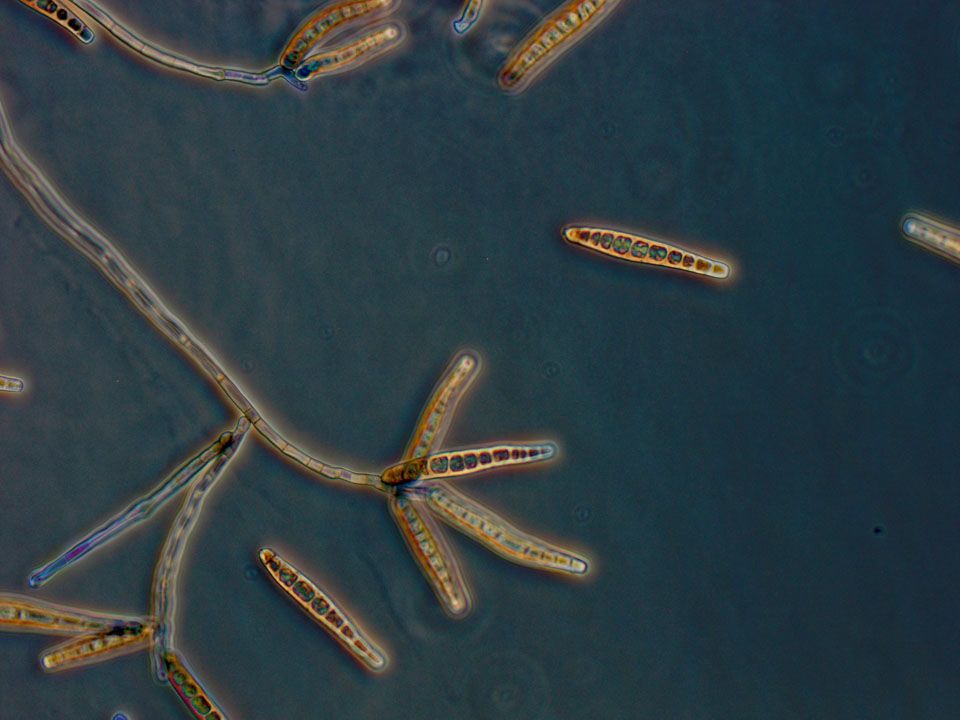华陀再世
一个中国医学生(CMG)在美国的生活。。。
嘴突脐孢(Exserohilum rostratum)
这批受真菌污染的类固醇针剂已经在9月26日被召回。新英格兰化合中心(New England Compounding Center)共有3个批次的产品涉及脑膜炎疫情,目前仍有另两批次的产品在接受检测。
新英格兰化合中心现已暂时关闭,接受美国政府调查。该中心被怀疑违反规定,制造大批药剂。根据规定,他们只被授权根据医生处方,定做特殊药剂以满足患者的个人需求。
据悉,所有脑膜炎感染者都曾因为背痛接受过类固醇注射治疗。美国联邦卫生官员透露,估计在全美23州的1万4千人注射了这批次的类固醇。医学专家表示,目前尚不知道会有多少人会发病,因为脑膜炎症状可能要等几个月才会出现。类固醇针剂主要用于医治背脊和关节疼痛。
美国疾病预防控制中心(CDC)表示,这种真菌性脑膜炎不会传染。当局建议所有曾注射过此类固醇的病人密切关注自己是否出现脑膜炎症状,包括剧烈头痛、恶心、发烧、言语不清以及行走困难等。患者如不及时获得医治,可导致永久性脑损伤或死亡。
根据美国疾病预防控制中心发布的数据,截至18日为止,确诊感染脑膜炎病例涉及15个州的257人,总死亡人数上升至20人。
[病例分析]
In the case published in Annals of Internal Medicine, the 51-year-old patient, who had a history of neck pain, hyperlipidemia, headaches, and fibromyalgia, presented to a local emergency department with new occipital headache radiating to the face 1 week after a cervical epidural steroid injection on August 31, 2012.
It was her first steroid injection for neck pain.
She had no history of immune compromise or trauma and was not taking any long-term medications. Physical examination and computed tomography of the head were normal, and she was discharged. No lumbar puncture was performed.
The woman returned to the emergency department the following day with diplopia, vertigo, nausea, and ataxia and was hospitalized. Physical examination was notable only for hoarseness and decreased tendon reflexes; routine serum chemistry and blood counts were normal, and she had no fever.
Magnetic resonance imaging (MRI) of the brain on her first day in the hospital was normal. By day 3, she remained afebrile but developed slurred speech, right hemiparesis, left facial droop, and anisocoria, prompting a second MRI, which showed a punctate focus of diffusion restriction in the pons, the team says.
Lumbar puncture revealed a glucose level of 1.998 mmol/L (36 mg/dL) (serum glucose level of 5.828 mmol/L [105 mg/dL]), total protein level of 153 mg/dL, and white blood cell count of 850 × 109 cells/L (84% neutrophils and 15% lymphocytes); results of Gram stain and bacterial culture were negative.
On day 4, treatment with acyclovir, cefepime, vancomycin, doxycycline, and methylprednisolone was initiated; however, she continued to deteriorate and developed dysphagia, leading to endotracheal intubation.
A third MRI showed multifocal areas of restricted diffusion in the pons, midbrain, and cerebellum and diffuse leptomeningeal enhancement.
Rapid Deterioration
Repeated lumbar puncture on day 7 showed a glucose level of 2.719 mmol/L (49 mg/dL) (serum glucose level of 8.436 mmol/L [152 mg/dL]), protein level of 104 mg/dL, and white blood cell count of 72 × 109 cells/L (64% neutrophils, 4% lymphocytes, and 4% monocytes).
Polymerase chain reaction testing of CSF was negative for herpes simplex virus, varicella zoster virus, Epstein-Barr virus, cytomegalovirus, and West Nile virus, as were cryptococcal and histoplasma antigens and CSF bacterial culture.
Repeated MRI of the brain showed new restricted diffusion in the left anterior thalamus, progression of brainstem infarction and edema, and interval development of ventriculomegaly, prompting placement of an externalized ventricular drain that did not result in clinical improvement.
The clinicians say the patient's health continued to deteriorate rapidly over the next several days, until she died 10 days later. Exserohilum species was reported in the CSF on the day she died.
Autopsy revealed a grossly necrotic brainstem, and microscopic examination showed angioinvasive, septate fungal hyphae associated with diffuse vasculitis and hemorrhagic infarction in the brain and spinal cord.
In their report, Dr. Lyons and colleagues note that human disease caused by Exserohilum species is "rare," although most pathologically confirmed cases in the ongoing outbreak of fungal meningitis were caused by this fungus.
"Intriguing" First Case
In the new NEJM report discussing the index case, researchers report that the man, who was his 50s, had a history of degenerative lumbar disc and joint disease and presented with headache and neck pain that had become progressively worse over the course of 8 days. Four weeks before presentation, he had received the latest in a series of epidural steroid injections of methylprednisolone.
On the basis of initial evaluation, the patient began receiving vancomycin, ceftriaxone, ampicillin, and glucocorticoids and was admitted to the hospital. Routine bacterial cultures of the blood and CSF were negative, and the glucocorticoids were stopped. The patient's symptoms improved with antimicrobial therapy, and he was sent home to complete the course of vancomycin and ceftriaxone for presumed community-acquired meningitis.
He presented 1 week after discharge with worsening symptoms and was hospitalized. On day 7 the microbiology laboratory confirmed Aspergillus fumigatus. The patient died on hospital day 22.
"What's intriguing about this case report is that the mold causing meningitis was reported to be Aspergillus fumigatus, an organism that has not been detected in any of the subsequent 200-plus cases," write the authors of a review article also published today in NEJM, entitled, "Fungal Infections Associated with Contaminated Methylprednisolone Injections—Preliminary Report."
Although the primary pathogen appears to be E rostratum, "it is possible that other pathogens could emerge and it remains a mystery as to why the index case is the sole case in which A. fumigatus was detected," write Carol Kauffman, MD, from the Veterans Affairs Ann Arbor Healthcare System in Michigan and colleagues.
They say it is "encouraging" that clinically apparent disease has developed in only a small percentage of exposed patients.
The CDC is providing regular clinical guidance updates (and new updates) on the fungal meningitis outbreak and the clinician's role.




